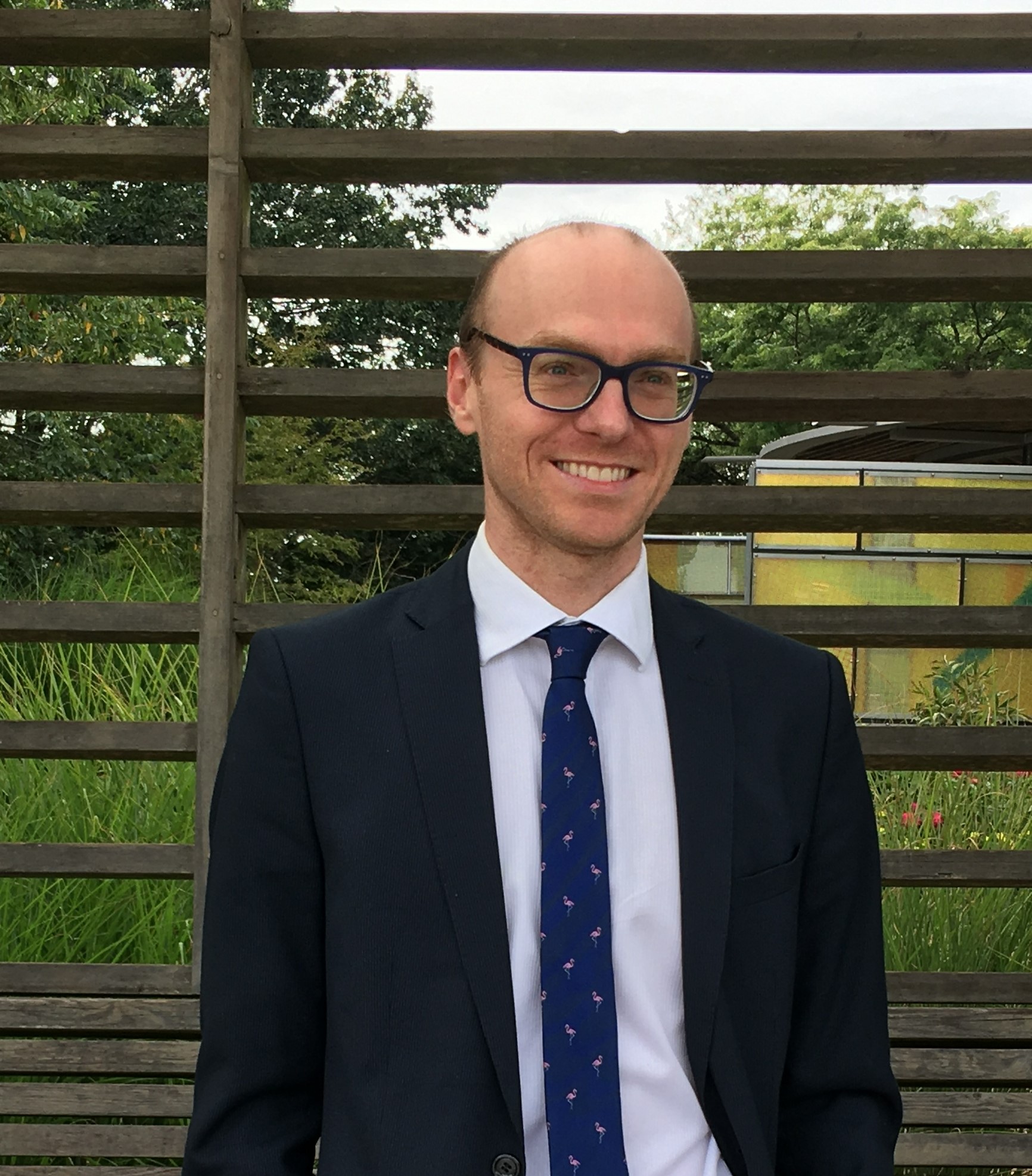ABSTRACTS
The program is in the process of being finalized/confirmed. Check back regularly for updates.
Click here to download the Schedule at a Glance.
Click here to download the presenter list.
Click here to download the presenting organization list.
Developing Laboratories Canada’s First Environmental Strategy
Élaboration de la première stratégie environnementale de Laboratoires Canada
Elisabeth Girgis, Eleanor Riley, Heather Hayne, Karissa Milbury
Laboratories Canada / Laboratoires Canada
Public Services and Procurement Canada / Services publics et Approvisionnement Canada
The objective of this presentation is to introduce Laboratories Canada’s progress in developing our first environmental strategy. Our presentation will also describe the benefits of a federal labs environmental strategy. It is a key opportunity to connect with industry about our ambition and interest in the solutions they may be able to provide.
L’objectif de cette présentation est de présenter les progrès de Laboratoires Canada dans l’élaboration de notre première stratégie environnementale. Notre présentation décrira également les avantages d’une stratégie environnementale pour les laboratoires fédéraux. C’est une opportunité clé de communiquer avec l’industrie sur notre ambition et notre intérêt pour les solutions qu’ils peuvent être en mesure de fournir.
Public Services and Procurement Canada’s Laboratories Canada program is a relatively new initiative, created in 2019, to build and restore federal science and technology infrastructure capacity. Its mandate is to work “with federal scientists and researchers to create together a national network of modern, multipurpose, scientific infrastructure”. A guiding principle of the overall strategy deals is environmental responsibility. In accordance with federal polices to meet national emissions targets, and the goals of the Greening Government initiative, the Laboratories Canada Strategy aims to “green” federal science and technology facilities. Laboratories and research facilities traditionally use higher amounts of energy, emit more greenhouse gases, and cost more to operate than equal size buildings of almost every other type, due to the precise environmental conditions required for conducting experiments. The objective of this presentation is to introduce the program’s progress in developing its first environmental strategy. The benefits of a federal labs environmental strategy will be described. Some benefits considered include: lower greenhouse gas emissions, lower cost of building operation, lower water use, lower cost spaces and equipment (due to sharing and collaboration), provision of appropriate and comfortable environmental conditions through the use of smart building systems, reduction of deferred maintenance, specific procurement strategies and greater employee satisfaction in working in a green workspace.
La recherche scientifique n’a pas besoin d’être à forte intensité de carbone, ni non durable. Le programme Laboratoires Canada de Services publics et Approvisionnement Canada est une initiative relativement nouvelle, créée en 2019, pour renforcer et rétablir la capacité de l’infrastructure scientifique et technologique fédérale. Son mandat est de travailler « avec les scientifiques et chercheurs fédéraux pour créer ensemble un réseau national d’infrastructures scientifiques modernes et polyvalentes ». Un principe directeur inclut la responsabilité environnementale, et notamment la Stratégie pour un gouvernement vert : Une directive du gouvernement du Canada. En raison des conditions environnementales précises requises pour mener des expériences scientifiques, les laboratoires et les installations de recherche utilisent traditionnellement de plus grandes quantités d’énergie, émettent plus de gaz à effet de serre et coûtent plus cher à exploiter que des bâtiments de taille égale de presque tous les autres types. En tant que chef de file de l’analyse éclairant les installations de science et la technologie fédérales, Laboratoires Canada est bien placé pour amorcer la réduction des gaz à effet de serre en améliorant les cadres d’exploitation des bâtiments, en promouvant les matériaux et l’équipement de construction à faible émission de carbone (grâce au partage et à la collaboration). Les présentateurs discuteront des défis uniques, des opportunités et des voies à suivre, y compris le financement, la collaboration (au sein du gouvernement et avec des partenaires externes) et de repenser l’approvisionnement en construction en tant que service de performance.
 Dr. Karissa Milbury is a policy analyst in Laboratories Canada’s Enterprise Planning and Operations sector. She is a molecular biologist and microbial geneticist with over a decade of experience working in scientific research, employing state-of-the-art equipment in the academic, private, and public sectors. Through her experience in laboratory operations management, she has participated in space allocation and renovation planning, information management, and safety reviews. She holds a Ph.D. in Genome Science & Technology from the University of British Columbia, and a B.Sc. in Biology from Dalhousie University. She is currently based in Vancouver, BC.
Dr. Karissa Milbury is a policy analyst in Laboratories Canada’s Enterprise Planning and Operations sector. She is a molecular biologist and microbial geneticist with over a decade of experience working in scientific research, employing state-of-the-art equipment in the academic, private, and public sectors. Through her experience in laboratory operations management, she has participated in space allocation and renovation planning, information management, and safety reviews. She holds a Ph.D. in Genome Science & Technology from the University of British Columbia, and a B.Sc. in Biology from Dalhousie University. She is currently based in Vancouver, BC.
Elisabeth Girgis, P.Eng., has over the past two decades has applied her studies to advance science for public service and sustainability. She holds a Master’s of Applied Science (engineering), and a Master’s of Arts (public administration). Her technical expertise rest in modeling of energy (combustion and consumption of buildings). For several years led national projections of the impact of new energy efficiency code requirements. She has received awards from the National Research Council and Natural Resources Canada for advancement of energy efficiency in Canada and for her role in the introduction of the environment as a new code objective. More recently to support a greater incorporation of climate change research in policy, she led technical advice to committees on net-zero energy and existing buildings. While at Indigenous Services Canada, she led a technical policy team supporting infrastructure reforms based on community-led holistic asset management planning. She also has worked on a variety of projects where questions of gender-equality come into play and has received a Bromley fellowship for her observations on stakeholder involvement at the science policy interface. With a focus on climate and environmental science, in joining Public Services and Procurement Canada’s Science and Parliamentary Infrastructure Branch she is fostering more collaboration and responsiveness across federal science departments. She currently leads development of the Laboratories Canada program first environmental strategy. She is excited about the opportunity of successfully braiding and adapting different types of knowledge.
Master Planning for Science Facility Renewal and GHG Emissions Reduction
Plan Directeur du Renouvellement des Installations Scientifiques et de la Réduction des Émissions GES
Janet Koshuta1, Patrick Fleming2, Warren Lesenko3
1START Architecture Inc.
2CIMA+
3SMP Engineering
The objective of this presentation is to present findings of a renewal master plan for a large science facility on campus incorporating systems renewals and GHG reduction strategies aimed at achieving net zero performance.
L’objectif de cette présentation est de présenter les résultats d’un plan directeur de renouvellement d’une grande installation scientifique sur le campus intégrant des renouvellements de systèmes et des stratégies de réduction des GES visant à atteindre une performance nette zéro.
Canadian campuses have extensive stock of older lab buildings facing end of life or significant renewal requirements to continue to operate in a cost-effective manner. Faced with pressures for increase research density and GHG emissions reductions, along with limited annual budgets. This puts a constant strain on the institution, academics and students.
Upgrade strategies must provide flexible planning for research intensification while prioritizing the necessary mechanical and electrical upgrades that can support GHG emissions reduction and ready the facility for the adoption of renewable energy and net zero performance.
Planning for such endeavors is complex with multiple interdependent upgrade priorities. An overarching plan, which is both strategic and scenario driven, can serve as a tool to align research, funding and facility upgrades over the long term for efficient project execution.
The Biological Sciences Building on the UA campus has undergone such a master planning effort and has initiated several space renewals and infrastructure upgrades intended to transform the facility into high density modern research and a learning centre for the campus.
À l’heure actuelle, un vaste réseau de campus postsecondaires canadiens dispose d’installations en laboratoire vieillissantes et désuètes qui nécessitent d’importants travaux de rénovation afin de continuer leurs utilisations de manière rentable. D’un autre côté, ces institutions font face à de nombreuses pressions telles que l’augmentation du nombre et de l’importance des projets de recherches, la réduction d’émissions GES, ainsi que des budgets annuels limités. Par conséquent, ce sont les universités ainsi que leurs étudiants qui ont à composer avec cette tension supplémentaire.
La stratégie de réhabilitation des installations de laboratoire doit intégrer l’augmentation de la capacité de ces installations tout en conservant des mises à niveaux mécaniques et électriques qui soutiennent la réduction des émissions GES, les énergies renouvelables ainsi que l’engagement Net-Zero.
La planification d’une telle stratégie est complexe due à sa multitude de priorités. À cet effet, un plan global basé sur différents scénarios peut devenir un outil efficace afin de concilier l’augmentation de la recherche, le financement et la mise à niveau à long terme des installations.
Le bâtiment des Sciences Biologiques du campus de l’Université de l’Alberta est un excellent exemple d’installations modernes en laboratoire qui fait l’objet d’un plan directeur visant la réhabilitation de l’établissement existant en un centre de recherches et d’apprentissages moderne.
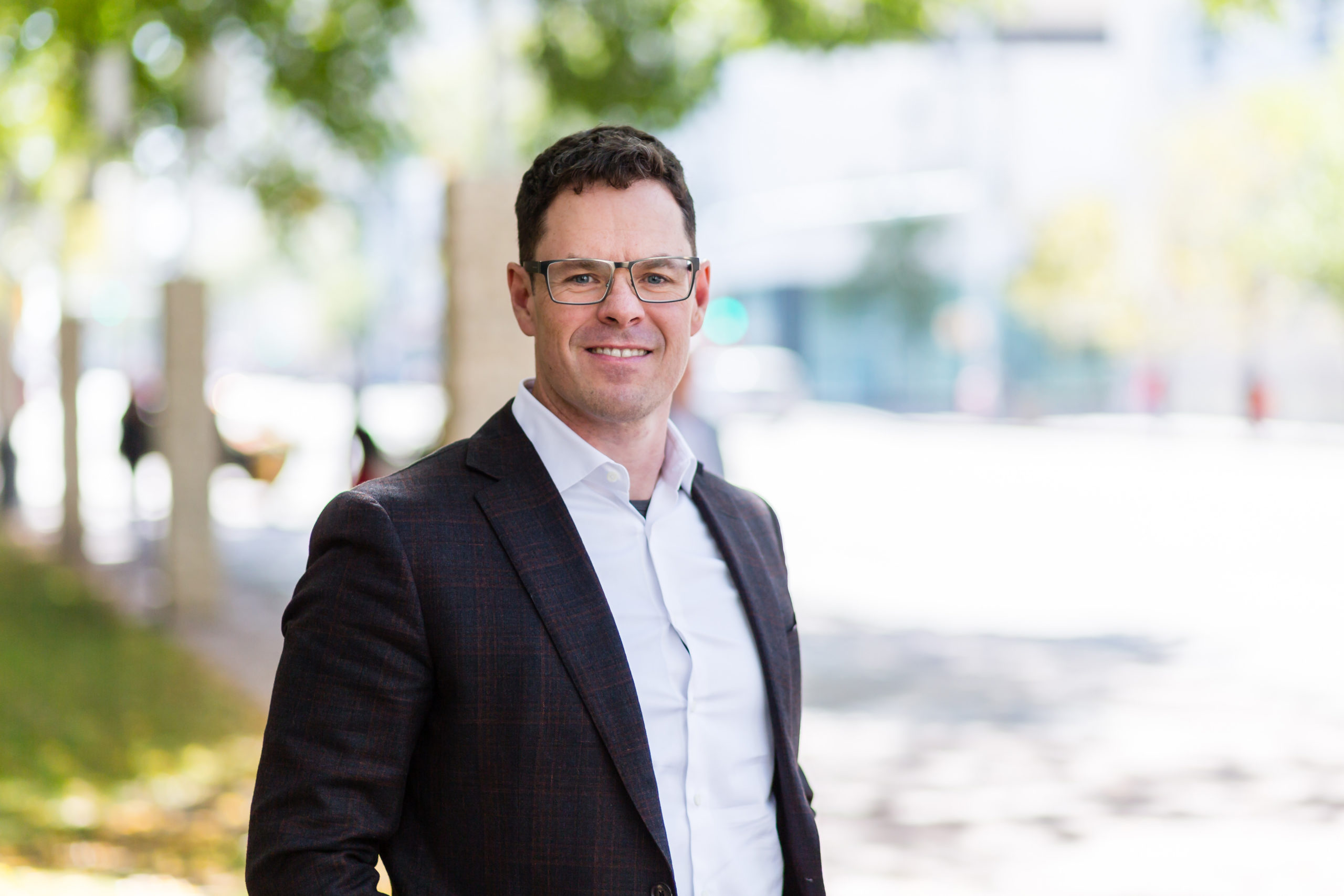 Patrick Fleming P.Eng., M.Sc., CEM, LEED AP, is a mechanical engineer with over 26 year of experience in design, commissioning and study of mechanical systems. Patrick has extensive experience in the design and operation of systems for laboratory facilities and in particular renewal of facilities adopting modern lab systems and energy saving design. Patrick was the principal mechanical engineer for numerous facilities at the University of Alberta including the Centennial Centre for Interdisciplinary Sciences and well as several facility renewals. Patrick’s current focus is advancing net zero planning into phased facility renewals.
Patrick Fleming P.Eng., M.Sc., CEM, LEED AP, is a mechanical engineer with over 26 year of experience in design, commissioning and study of mechanical systems. Patrick has extensive experience in the design and operation of systems for laboratory facilities and in particular renewal of facilities adopting modern lab systems and energy saving design. Patrick was the principal mechanical engineer for numerous facilities at the University of Alberta including the Centennial Centre for Interdisciplinary Sciences and well as several facility renewals. Patrick’s current focus is advancing net zero planning into phased facility renewals.
Patrick Fleming P.Ing., M.Sc., CEM, PA LEED, est un ingénieur en mécanique avec plus de 26 ans d’expérience dans la conception, la mise en service, et l’étude des systèmes mécaniques. Patrick possède une vaste expérience dans la conception et le renouvellement de systèmes mécaniques d’installations en laboratoire dans lequel il vise toujours une conception qui favorise l’économie en énergie en intégrant des systèmes mécaniques modernes. Patrick a été l’ingénieur principal pour plusieurs projets à l’Université d’Alberta (University of Alberta) incluant le Centre Centenaire des Sciences Interdisciplinaires (Centennial Centre for Interdisciplinary Science) où il a participé au renouvellement de plusieurs installations. L’objectif premier de Patrick est de faire progresser l’engagement Net-Zero.
 Janet Koshuta, Architect AAA, SAA, M.Arch, RAIC, is an architect and Principal of START Architecture. She has played a lead role in design of several complex new and renovation projects for offices, healthcare and research, including Alberta post-secondary institutions. This has allowed her to participate in all phases of project delivery, including the functional programming, schematic design, architectural and interior design development and contract document phases. Through her extensive knowledge of building systems, furniture and equipment and workflow patterns, Janet can support, direct and lead the entire architectural and interiors design team and the engineering consultants alike.
Janet Koshuta, Architect AAA, SAA, M.Arch, RAIC, is an architect and Principal of START Architecture. She has played a lead role in design of several complex new and renovation projects for offices, healthcare and research, including Alberta post-secondary institutions. This has allowed her to participate in all phases of project delivery, including the functional programming, schematic design, architectural and interior design development and contract document phases. Through her extensive knowledge of building systems, furniture and equipment and workflow patterns, Janet can support, direct and lead the entire architectural and interiors design team and the engineering consultants alike.
Janet Koshuta, Architecte AAA, SAA, M.Arch, IRAC, est une architecte et directrice de START Architecture. Elle a joué un rôle de premier plan dans la conception, construction et rénovation de nombreux complexes, bureaux, établissements de soins de santé et de recherche ainsi que d’institutions postsecondaires en Alberta. Au cours de ses diverses expériences, elle a eu l’opportunité de participer à différentes phases de livraison de projet telles que la programmation fonctionnelle, la conception schématique, le design intérieur et la conception architecturale ainsi que d’assister aux étapes du document contractuel. Grâce à sa connaissance approfondie des différentes composantes du bâtiment (mobilier, équipement requis et modèles de flux de travail), Janet peut soutenir et diriger l’ensemble d’une équipe de conception architecturale, de design intérieur ainsi que de consultants en ingénierie.
 Warren Lesenko, P.Eng., is a Professional Engineer with 33 years of experience in in Western Canada specializing in technical facilities including laboratories and hospitals facilities, and data centres. His project duties include the development of conceptual design, detailed design, providing field services and maintaining client liaison, while ensuring the project meets all criteria including appropriate codes and authorities having jurisdiction. Warren specializes in the renewal and upgrade of aging facilities, with a keen interest in implementing modern technologies including cogeneration, photovoltaics and efficient lighting designs. His prime focus on multistage projects is to ensure short term rehabilitation does not block the pathway to an efficient and effective renewal of the facilities.
Warren Lesenko, P.Eng., is a Professional Engineer with 33 years of experience in in Western Canada specializing in technical facilities including laboratories and hospitals facilities, and data centres. His project duties include the development of conceptual design, detailed design, providing field services and maintaining client liaison, while ensuring the project meets all criteria including appropriate codes and authorities having jurisdiction. Warren specializes in the renewal and upgrade of aging facilities, with a keen interest in implementing modern technologies including cogeneration, photovoltaics and efficient lighting designs. His prime focus on multistage projects is to ensure short term rehabilitation does not block the pathway to an efficient and effective renewal of the facilities.
Warren Lesenko, P.Ing., est un ingénieur avec plus de 33 ans d’expérience spécialisé dans les installations techniques telles que les laboratoires, les établissements hospitaliers ainsi que les centres de données principalement situés dans l’ouest canadien. Ses tâches se résument au développement du design conceptuel, de la conception détaillée, aux services durant la construction et au maintien d’une bonne relation avec le client en s’assurant que le projet répond aux demandes ainsi qu’aux codes et normes en vigueur. Warren a aussi une expertise dans le renouvellement et la mise à niveau d’installations vieillissantes et a un grand intérêt dans la mise en œuvre de technologies d’économie d’énergie telles que la cogénération, l’énergie solaire photovoltaïque et la conception d’éclairage efficace. Son objectif principal est de s’assurer qu’une réhabilitation à court terme comporte aussi un renouvellement de nouvelles installations d’efficacité énergétiques.
UBC Campus Living Labs: An Innovative Approach to the Collaborative Research
Angelique Pilon, University of British Columbia
The objective of this presentation is to provide an overview of our experiences with living labs at the University of British Columbia, an innovative and adaptive approach to experimentation beyond the traditional bounds of laboratories.
Society is facing unprecedented challenges in the 21st century, including a climate emergency, ecosystem destruction, global urban migration, pandemics, and emergence of new technologies. These complex and interconnected challenges are driving the shift towards what will become a new normal, which may be different for everyone. Adapting and responding to these challenges necessitates new approaches to traditional activities, including research. How and where research takes place are becoming critical questions to ask, and even more importantly why and with whom. Over the last decade, the University of British Columbia has been tackling these issues through its Campus as a Living Lab (UBC-CLL) program.
Living laboratories are physical spaces and human systems in which we design, test, study, and learn from social and technical innovations in real time and real-world contexts. They support collaborative experimentation, piloting of innovations, critical assessment of results, and exchange of knowledge.
UBC’s Campus as a Living Lab integrates academic research and teaching with campus planning, infrastructure, operations and community development to respond to global challenges in our local context. We use our university campus as a large-scale laboratory to explore, experiment and demonstrate new ideas, while learning from both our successes and failures. Campus Living Lab projects bring together collaborations of academic researchers, students, staff and partners to engage in innovative research projects that aim to address the connections between ecological, social, human health and technological issues. Two recent examples include a new facility that accesses campus wastewater and a pilot carbon capture and conversion installation, both of which support diverse research projects and testing of innovative technology. Others include use of campus as a lab to develop new research tools and techniques that can be deployed in more remote areas thereby improving field research, such as using drone technology, remote sensing and machine learning to map tree canopies or insect populations.
This presentation will provide an overview of UBC’s Campus Living Lab program and examples of current and past research projects to illustrate different principles and practices. Information will include the use of the campus itself as an effective ‘lab’, collaborations between academic researchers, operational staff and industry, deployment of new technologies, and strategies to improve equity and inclusivity. We will share our experiences and lessons learned from the planning, design and implementation of these living lab projects, and the implications for UBC facilities and infrastructure as well as future research opportunities.
 Angelique Pilon leads the Urban Innovation Research portfolio of interdisciplinary research and educational programs focused on advancing sustainable solutions to global challenges such as climate change. She develops projects and partnerships that take advantage of UBC’s role as a living lab for sustainability to create opportunities for innovation and learning, and oversees outreach and communications to influence practices and policies beyond the campus. Angelique is on the Leadership Board for the BC Chapter of the Canada Green Building Council; she is a certified Project Management Professional and a LEED Accredited Professional with a specialization in Building Design and Construction.
Angelique Pilon leads the Urban Innovation Research portfolio of interdisciplinary research and educational programs focused on advancing sustainable solutions to global challenges such as climate change. She develops projects and partnerships that take advantage of UBC’s role as a living lab for sustainability to create opportunities for innovation and learning, and oversees outreach and communications to influence practices and policies beyond the campus. Angelique is on the Leadership Board for the BC Chapter of the Canada Green Building Council; she is a certified Project Management Professional and a LEED Accredited Professional with a specialization in Building Design and Construction.
Warmer, Wetter, and Windier: Future Proofing Your Building Enclosure for Extreme Weather
Kenneth Roko, RWDI
The objective of this presentation is to identify changing climatic conditions that influence enclosure design of laboratory buildings and optimize laboratory-specific enclosure design strategies associated with occupant comfort.
Long-term investments in research and equipment rely heavily on the building enclosure to moderate the outdoor environmental conditions and maintain an operational indoor environment. With the changing climate, the demand on laboratory buildings enclosures is evolving to mitigate more intense weather events. Climate variables such as increased rainfall, rising or falling temperatures, more extreme winds, or more frequent intense storms can impact building enclosure design in different ways and require specific design strategies to reliably perform during extreme weather. Incorporating resiliency measures can help ensure laboratory buildings maintain their functional use and prevent losses during utility outages.
This presentation will begin with an overview of climate forecasting and adapting the project requirements to the future needs of the laboratory. The discussion will focus on the implementation of specific construction approaches from schematic design through construction and integration. Each approach will be considered with respect to reducing operational energy use through strategies such as increased insulation, increased air tightness, and optimal daylight design. Beginning in early design, building material and assembly selection must prioritize increased resiliency and durability, including redundant passive systems where necessary.
Consideration for ongoing maintenance and adaptation of the existing building stock is crucial for a comprehensive enclosure design. Finally, the design approach must consider the ability to maintain comfortable or operable interior conditions during catastrophic events. This session includes several case studies with key considerations for academic and research laboratory facilities that are looking to improve sustainability, resiliency, and durability to future-proof buildings against more extreme climate events.
 During his two decades of work in the building enclosure field, Ken has analyzed the effects of humidity and temperature on wall and roof assemblies throughout the world. Our clients benefit in particular from his expertise in roofing, waterproofing and air barriers. Ken’s project portfolio includes historic preservation projects, exterior restoration, cladding systems, curtain walls, below-grade and horizontal waterproofing systems.
During his two decades of work in the building enclosure field, Ken has analyzed the effects of humidity and temperature on wall and roof assemblies throughout the world. Our clients benefit in particular from his expertise in roofing, waterproofing and air barriers. Ken’s project portfolio includes historic preservation projects, exterior restoration, cladding systems, curtain walls, below-grade and horizontal waterproofing systems.
A respected leader in the building enclosure industry, Ken is regularly called to provide expert witness testimony, and was recently part of a team of experts who edited and updated the Below-grade Waterproofing, Vegetated Roofs and Roofing sections of the Whole Building Design Guide (www.wbdg.org) commissioned by the National Institute of Building Sciences (NIBS).
McGill University Lyman Duff Building – A Major Upgrade of a Mid-Century Laboratory Complex
Yvon Lachance1 and Magali Tremblay2
1BGLA Inc.
2Pageau Morel et associés
The objective of this presentation is to share that a major infrastructure upgrade of laboratory buildings constructed in the 1950s or 1960s can be feasible, can be accomplished effectively, and can generate important sustainability benefits. It will also share some of the specific challenges associated with the upgrading of building systems of laboratory facilities with heritage significance, or which are located in a heritage preservation zone.
North America experienced major economic growth and prosperity following the Second World War. Hundreds of laboratory buildings that were built in the 1950s and 1960s are now considered obsolete and could face decommissioning. But is it sustainable to demolish such large scientific infrastructure? Could there be a way to preserve and upgrade this vast expanse of laboratories and bring these facilities up to date?
Speakers Lachance and Tremblay will present the project that they designed and completed for McGill University – the major infrastructure upgrade of the Lyman Duff Medical Building. The Duff is an existing bio-medical research facility of more than 14,000 m² (over 150,000 ft²) built in several phases (1923, 1965 and 1971), located in an area of significant heritage value and in a dense urban environment – one where the Montreal Neurological Institute and Hospital directly adjoins the building.
The project consisted of the complete replacement of the electrical and mechanical systems of the complex’s laboratory wings, including the construction of a brand-new mechanical room and emergency generator installation on the roof of the 1971 wing. The project also involved the complete reconstruction of all the technical service shafts of the 8-storey research tower.
All of the construction occurred while the building was occupied, without interrupting or hindering ongoing research activities and operations – a colossal challenge that was met through a process of sustained collaboration with the building occupants. An accelerated construction schedule required by the Federal Government’s funding program, led BGLA and PMA to recommend pre-purchase equipment and component lots, and multiple construction lots.
The new design corrected many shortcomings in the existing building systems:
- by adding air conditioning / ventilation capacity that was deficient;
- by adding heat recovery systems that were absent from the original systems ;
- by adding an emergency generator; and
- by adding high-dispersion evacuators.
The result is a building infrastructure whose useful life has been extended by at least 30 years and which now makes efficient and environmentally friendly use of energy.
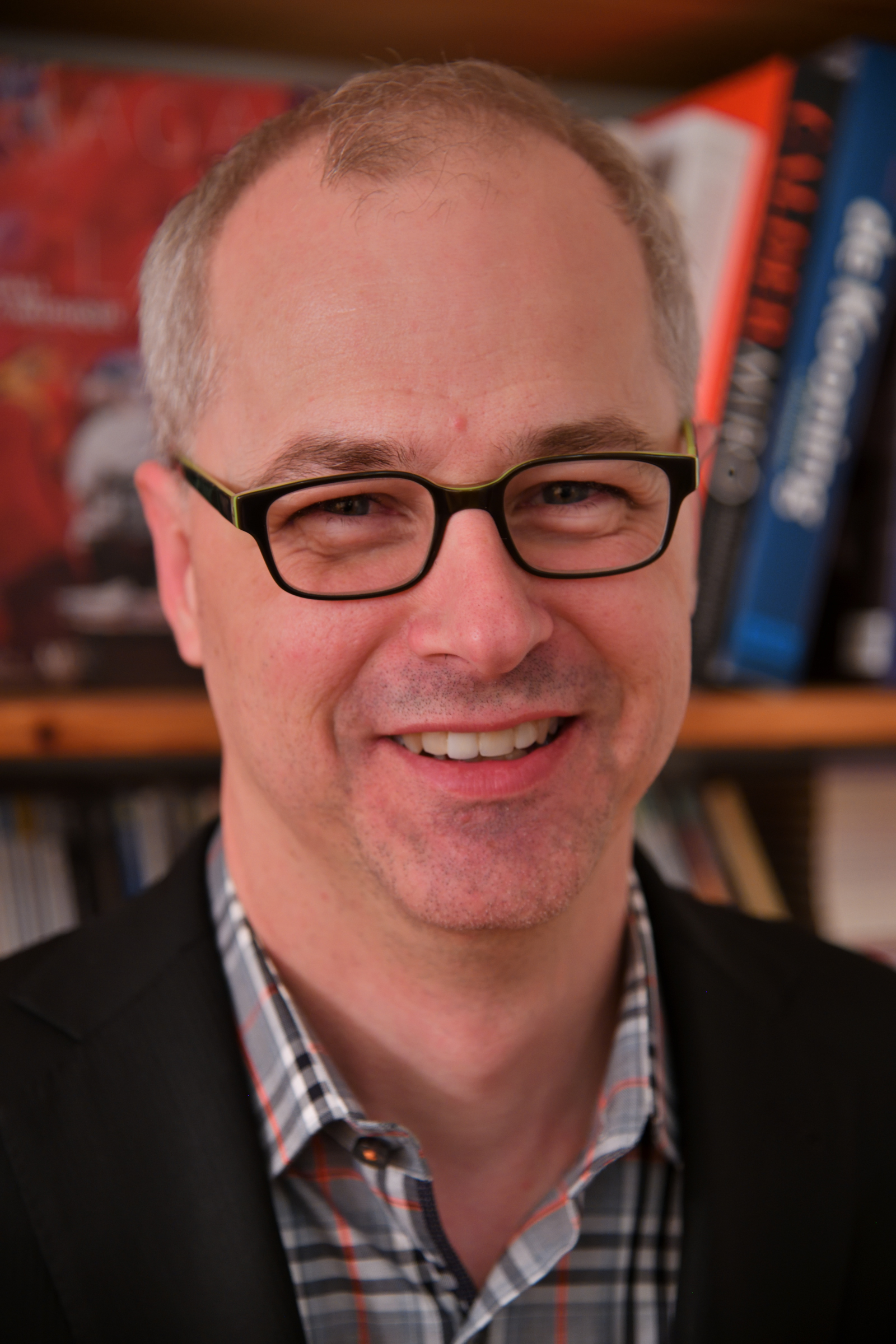 Yvon Lachance is a Senior Partner at BGLA Architecture, based at the firm’s Montreal office. With 28 years of experience in architecture, Mr. Lachance leads the firm’s “critical environments” department. His portfolio of projects includes major institutional and public buildings, university pavilions, research centres (health, chemistry, physics) as well as contemporary and heritage building envelope renovation projects. He is a Fellow of Construction Specification Canada, a member of the International Association for Preservation and its Techniques, a member of the International Institute for Sustainable Laboratories (I²SL), and he is the current President of Sustainable Labs Canada.
Yvon Lachance is a Senior Partner at BGLA Architecture, based at the firm’s Montreal office. With 28 years of experience in architecture, Mr. Lachance leads the firm’s “critical environments” department. His portfolio of projects includes major institutional and public buildings, university pavilions, research centres (health, chemistry, physics) as well as contemporary and heritage building envelope renovation projects. He is a Fellow of Construction Specification Canada, a member of the International Association for Preservation and its Techniques, a member of the International Institute for Sustainable Laboratories (I²SL), and he is the current President of Sustainable Labs Canada.
 Magali Tremblay is Assistant Director and Associate at Pageau Morel, a consulting engineering firm specialized in the fields of mechanical and electrical engineering, energy efficiency and ecodesign. Specializing in laboratories, she has been contributing to many institutional and research centre projects. Magali has obtained a Bachelor’s Degree in Electrical Engineering and is also a certified LEED AP. She holds the title of treasurer for the Montreal Chapter of Sustainable Labs Canada (SLCan) as well as been involved in CREW M.
Magali Tremblay is Assistant Director and Associate at Pageau Morel, a consulting engineering firm specialized in the fields of mechanical and electrical engineering, energy efficiency and ecodesign. Specializing in laboratories, she has been contributing to many institutional and research centre projects. Magali has obtained a Bachelor’s Degree in Electrical Engineering and is also a certified LEED AP. She holds the title of treasurer for the Montreal Chapter of Sustainable Labs Canada (SLCan) as well as been involved in CREW M.
Acoustics for the Resilient Lab
Steve Titus, Aercoustics Engineering Limited
The objective of this presentation is to demonstrate acoustic design strategies for innovation and resilience in laboratory design.
This presentation will explore the latest developments in acoustics for laboratory design, from human comfort and research integrity to sustainability and new building types. Join Steve Titus in examining these advancements, challenges, and solutions with accompanying case studies. When acoustical planning is part of the early design process, it is possible to enjoy the latest in technical innovations, building a flexible and resilient space without compromising acoustic performance.
Human Comfort in the Workplace
The lab is a unique office environment, filled with noisy equipment and hard, reflective surfaces. A loud lab has been accepted as the status quo, forcing researchers to endure uncomfortable conditions. We all know that the status quo isn’t good enough to attract and retain talent. Using the latest in modern workspace standards, acoustics for comfort, wellness, and productivity can be tailored to any lab environment. This presentation will outline the lab ready applications of office acoustic design strategies. Using built examples, this will include strategies for locating noisy equipment, placing and shaping collaboration zones to facilitate cross pollination and hybrid work, and quiet spaces for focus.
Research Integrity
An emerging focus on the acoustical environment of animal research facilities has reshaped vivarium research conditions and design standards. One recurring theme stands out: the most sensitive vivarium research equipment may not be the equipment at all. Acoustical design standards typically focus on the human hearing spectrum. Applying the same approach to a different species yields whole new criteria for perception and comfort. The impact of acoustic phenomena on vivarium research validity, grant funding, and animal safety can be substantial. This presentation will discuss the expected and unexpected sources of acoustic disruption in vivaria and creative strategies for mitigation. Case studies will include Carleton Health Sciences and Sick Kids Peter Gilgan Centre for Research and Learning.
Sustainability
Mass timber construction is an evolving building type. While primarily used in commercial and residential design, mass timber is becoming more popular for technically complex projects – such as laboratory and research developments including the new CAMH Research Centre. The current industry standards do not always work with wood construction. Careful and innovative approaches are required to find practical and cost-effective solutions, particularly with the highly technical requirements of research projects. Mass timber’s lightweight construction presents challenges with vibration isolation for research imaging and sound isolation performance across all spaces. Steve will discuss strategies to resolve these issues, including strategic location of sensitive uses, adding resilient pads between structural timber elements, and incorporating decoupling elements into the wall or floor assemblies.
 Steve Titus brings almost 20 years of experience to his role as President & CEO of Aercoustics Engineering Limited. Steve leads a team of acoustical engineers that provide a broad range of services worldwide at Aercoustics, a privately-held firm that specializes in fostering innovation in acoustics, vibration and noise control. Over his career, Steve has been responsible for the acoustical design and delivery of many high-profile laboratory projects including Sick Kids Peter Gilgan Centre for Research and Learning, the new CAMH Research Centre, Public Health Ontario Lab in the MaRS Discovery Centre, Carleton Health Sciences Building, and more.
Steve Titus brings almost 20 years of experience to his role as President & CEO of Aercoustics Engineering Limited. Steve leads a team of acoustical engineers that provide a broad range of services worldwide at Aercoustics, a privately-held firm that specializes in fostering innovation in acoustics, vibration and noise control. Over his career, Steve has been responsible for the acoustical design and delivery of many high-profile laboratory projects including Sick Kids Peter Gilgan Centre for Research and Learning, the new CAMH Research Centre, Public Health Ontario Lab in the MaRS Discovery Centre, Carleton Health Sciences Building, and more.
Climate Change Resiliency
Joel Good, RWDI
The objective of this presentation is to consider what changes are needed in our design process to minimize risk to our buildings and processes, and, to discuss potential mitigation measures that can lead to more resilient lab buildings.
As we continue to work to reduce our climate change impact through energy reduction and decarbonization we cannot deny that the climate has already changed. We are seeing hotter, dryer summers leading to drought and health risks, more intense rainfall leading to flooding, increased wildfire leading to poor air quality to name a few. It is now imperative to consider these and future projected changes into our design process to minimize risk to our buildings and processes. For lab buildings where air quality, safety, and continuity of operations are often essential, resilient design decisions are even more important. This session will review current best practices for evaluating future climate considerations for a site and discuss potential mitigation measures that can lead to more resilient lab buildings in the face of a changing climate.
 Joel Good is a Principal and the Sustainability Practice Area Leader with RWDI where he is a trusted advisor on projects aiming to create comfortable, sustainable built environments. Joel specializes in energy and daylight modelling, solar and reflected light studies, thermal and visual comfort, and net-zero strategies.
Joel Good is a Principal and the Sustainability Practice Area Leader with RWDI where he is a trusted advisor on projects aiming to create comfortable, sustainable built environments. Joel specializes in energy and daylight modelling, solar and reflected light studies, thermal and visual comfort, and net-zero strategies. More for Less – Lab Upgrades and Energy Retrofits
Mary On, Integral Group
The objective of this presentation is to examine retrofit strategies that support both lab expansion and energy reduction.
There has been significant growth in both private and public research institutions, and an increase in enrollment in university STEM programs. Demand for lab and research space is rising but the pace of new construction cannot keep up with the demand. Coupled with the urgent need to reduce building energy consumption and carbon emission, it’s becoming more and more common for companies and universities to renovate and upgrade existing facilities to create lab spaces to meet the demand for both research space and energy reduction.
While it’s difficult to predict the future of research and what it needs, designers must do their best to incorporate services and features that allow for growth when renovating a lab. Energy retrofits need to be examined through the lens of research: Will it support additional lab equipment while reducing energy and water consumption? Is the new mechanical system compatible with any energy or decarbonization plans the institution might have? Will the renovated facility be resilient to climate change and environmental disaster? These are some of the questions the project team needs to consider when defining the project objectives.
The presentation will review energy retrofit projects done at universities and public research facilities to examine retrofit strategies that support both lab changes/expansion, and energy reduction.
 Mary On is an Associate on the Science and Technology Team at Integral Group. With experience in sustainable mechanical design, Mary focuses on delivering lab facilities that are sustainable, practical and resilient by providing simple solutions to seemingly complex problems through her designs.
Mary On is an Associate on the Science and Technology Team at Integral Group. With experience in sustainable mechanical design, Mary focuses on delivering lab facilities that are sustainable, practical and resilient by providing simple solutions to seemingly complex problems through her designs.
Mary is a Registered Professional Engineer in British Columbia and a certified Passive House Designer. She has led the mechanical design for projects including the new RCMP Division ‘E’ Forensic Lab, and the Stewart Blusson Quantum Matter Institute at the University of British Columbia.
Lab Resiliency: Case Study of the NRC Brookside Facility
Résilience en laboratoire: Étude de l’installation de Brookside du CNRC
Martin Kristensen1, Aaron Pollock2, Robert Chercoe3
1Diamond Schmitt Architects
2Number TEN Architectural Group
3National Research Council Canada
The objective of this presentation is to cover, through the lens of resiliency, the construction of the National Research Council’s newest facility in Winnipeg during the pandemic and discuss opportunities and the evolution of lab flexibility and adaptability as it occurred in real-time.
À travers le prisme de la résilience, la présentation couvrira la construction de la toute nouvelle installation du Conseil national de recherches du Canada à Winnipeg pendant la pandémie et discutera des opportunités et de l’évolution de la flexibilité et de l’adaptabilité des laboratoires en temps réel.
The new National Research Council facility in Winnipeg, MB was designed for adaptability and flexibility as an applied research lab. This initial adaptability was challenged, as with all projects, during the pandemic. Through a lens of resiliency, the presentation will talk about the evolution of the project prior to the pandemic, as well as during with the introduction of laboratory fit-outs implemented during construction. The continuing evolution of the project and pandemic are factors that were challenged to ensure labs continue to meet the primary objectives set out at the beginning of the project. This holistic approach to the building will also be explored beyond the laboratories and describe how all common areas and the building exterior was designed to react to future expansion and adaptability.
La nouvelle installation du CNRC à Winnipeg, au Manitoba, a été conçue pour être adaptable et flexible en tant que laboratoire de recherche appliquée. Cette capacité d’adaptation initiale a été mise à l’épreuve, comme pour tous les projets, pendant la pandémie. À travers une lentille de résilience, la présentation parlera de l’évolution du projet avant la pandémie, ainsi que pendant avec l’introduction des aménagements de laboratoire mis en place lors de la construction. L’évolution continue du projet et la pandémie sont des facteurs qui ont été remis en question pour s’assurer que les laboratoires continuent d’atteindre les objectifs principaux définis au début du projet. Cette approche holistique du bâtiment sera également explorée au-delà des laboratoires et décrira comment tous les espaces communs et l’extérieur du bâtiment ont été conçus pour réagir à l’expansion et à l’adaptabilité futures.
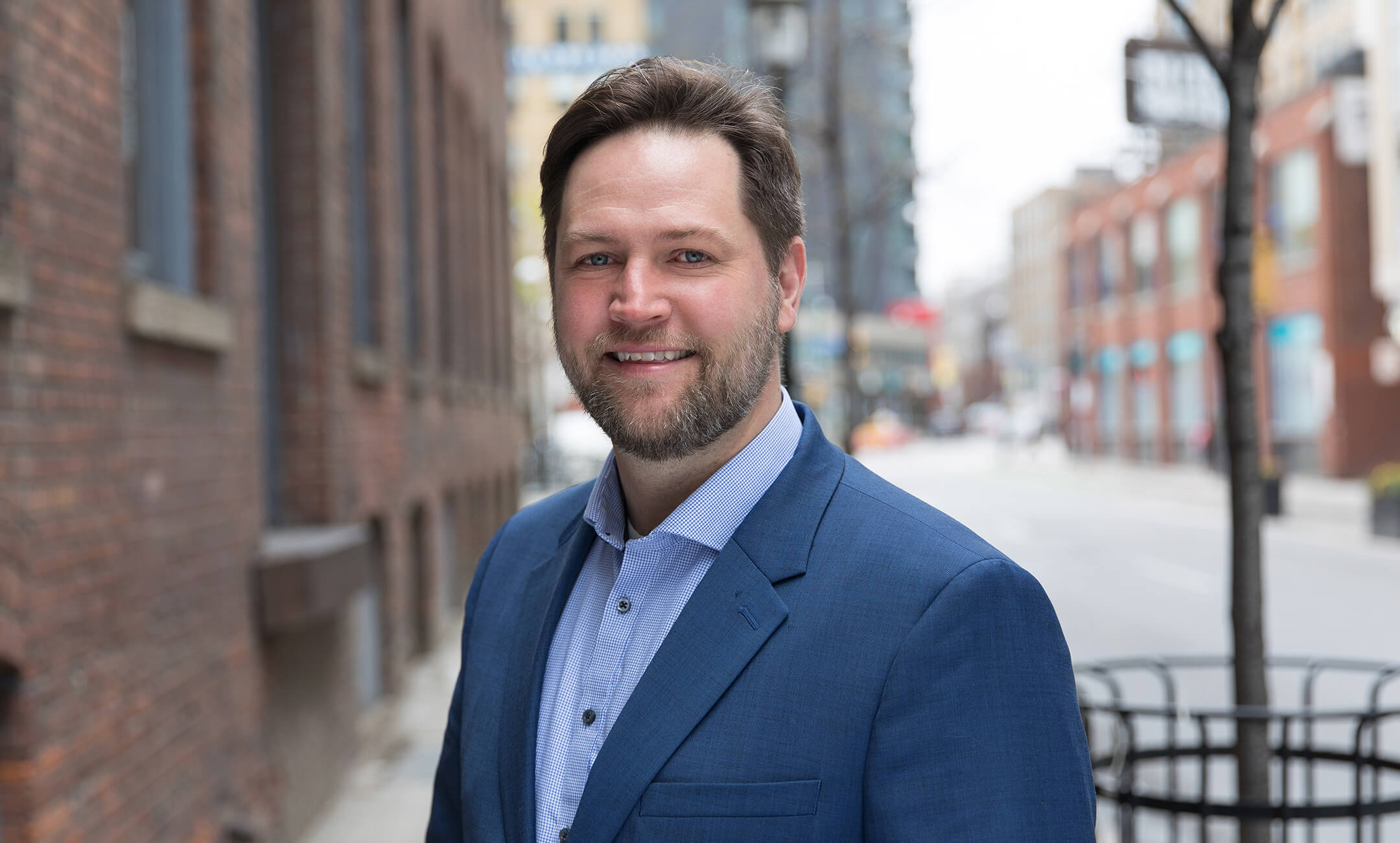 Martin Kristensen is a laboratory design specialist with 19 years of experience with Diamond Schmitt Architects. His portfolio has focused on the design and construction of complex laboratory and research facilities. In addition to the laboratory for the National Research Council in Winnipeg, previous roles include project manager for the Fraunhofer Project Centre for Biomedical Engineering & Advanced Manufacturing at McMaster University in Hamilton; project manager for the Reactor Materials Testing Laboratory at Queen’s University; and the Li Ka Shing Knowledge Institute for St. Michael’s Hospital in Toronto.
Martin Kristensen is a laboratory design specialist with 19 years of experience with Diamond Schmitt Architects. His portfolio has focused on the design and construction of complex laboratory and research facilities. In addition to the laboratory for the National Research Council in Winnipeg, previous roles include project manager for the Fraunhofer Project Centre for Biomedical Engineering & Advanced Manufacturing at McMaster University in Hamilton; project manager for the Reactor Materials Testing Laboratory at Queen’s University; and the Li Ka Shing Knowledge Institute for St. Michael’s Hospital in Toronto.
 Aaron Pollock is an architect at Number TEN with nine years’ experience on a wide variety of large- to small-scale projects. His interest in urban design and community involvement led him to lead a community engagement ideas competition for the re-imagination of the Alexander Docks site in Winnipeg. Aaron is passionate about civic work that facilitates unique and engaging public spaces.
Aaron Pollock is an architect at Number TEN with nine years’ experience on a wide variety of large- to small-scale projects. His interest in urban design and community involvement led him to lead a community engagement ideas competition for the re-imagination of the Alexander Docks site in Winnipeg. Aaron is passionate about civic work that facilitates unique and engaging public spaces.
 Robert Chercoe is a Professional Engineer at the National Research Council with over 20 years of experience in laboratory construction and maintenance. He has experience with laboratories at the Public Health Agency of Canada and with the NRC. Robert was the Project Manager for the construction of the Advanced Manufacturing laboratories in Winnipeg and currently manages site operations for the west region at the NRC which includes sites from Victoria to Winnipeg.
Robert Chercoe is a Professional Engineer at the National Research Council with over 20 years of experience in laboratory construction and maintenance. He has experience with laboratories at the Public Health Agency of Canada and with the NRC. Robert was the Project Manager for the construction of the Advanced Manufacturing laboratories in Winnipeg and currently manages site operations for the west region at the NRC which includes sites from Victoria to Winnipeg.
A Performance-Based Design Approach for Balancing Risks and Construction Cost in Vibration-Sensitive Labs
Une approche de conception basée sur les performances pour équilibrer les risques et les coûts de construction dans les laboratoires sensibles aux vibrations
Julia Graham, Motioneering
The objective of this presentation is to understand how vibration can affect sensitive lab equipment; and understand how various parameters influence predictions of footfall vibration.
L’objectif de cette présentation est de comprendre comment les vibrations peuvent affecter les équipements de laboratoire sensibles ; et comprendre comment divers paramètres influencent les prédictions des vibrations de pas.
Specialized laboratory equipment often requires low-vibration environments for proper functionality. On elevated floors, occupant footfalls are often the most critical source of vibration. Individual footfall forces depend primarily on the weight of the walker and on his or her pace frequency. Traditional methods for predicting footfall-induced vibration recommend using the weight of an average person and a range of expected walking frequencies. However, no consideration is given to the probability of occurrence of each walking frequency. Enveloping the worst-case of all possible walking frequencies can result in an overly conservative design, especially in cases in which occasional exceedances of vibration criteria are tolerable.
This presentation will highlight a novel performance-based design approach in which known statistical distributions of various walker parameters (e.g., walker weight and pace frequency) are used to determine statistical representations of expected floor vibrations (e.g., vibration levels expected to be exceeded 10% of the time the floor experiences footfall excitation). This allows for a cost-effective and sustainable design in cases where occasional vibration-criteria exceedances are tolerable. This statistical representation also allows for risk-based decision making in which costs are weighed against vibration risks. Cases in which traditional versus the novel statistical approach might be most appropriate will be discussed.
Les équipements de laboratoire spécialisés nécessitent souvent des environnements à faibles vibrations pour fonctionner correctement. Sur planchers surélevés, les pas des occupants sont souvent la source la plus critique de vibrations. La force des pas individuels dépendent principalement du poids du marcheur et de la fréquence de son pas. Les méthodes traditionnelles de pour prédire les vibrations induites par les pas recommandent d’utiliser le poids d’une personne moyenne et une gamme de fréquences de marche prévues. Cependant, aucune considération n’est donnée à la probabilité d’occurrence de chaque fréquence de marche. Envelopper le pire cas de toutes les fréquences de marche possibles peut entraîner une conception trop conservatrice, en particulier dans les cas où des dépassements occasionnels des critères de vibration sont tolérables.
Cette présentation mettra en évidence une nouvelle approche de conception basée sur les performances dans laquelle les distributions statistiques connues de divers paramètres du marcheur (par exemple, le poids du marcheur et la fréquence de pas) sont utilisées pour déterminer les représentations statistiques des vibrations attendues du sol (par exemple, les niveaux de vibration devant être dépassés de 10 % du moment où le sol subit une excitation de pas). Cela permet une conception rentable et durable dans les cas où des dépassements occasionnels des critères de vibration sont tolérables. Cette représentation statistique permet également une prise de décision basée sur les risques dans laquelle les coûts sont pondérés par rapport aux risques de vibration. Les cas dans lesquels l’approche statistique traditionnelle par rapport à la nouvelle approche pourrait être la plus appropriée seront discutés.
 Julia Graham is a senior engineer specializing in structural dynamics with Motioneering, a sister company to RWDI. With 12 years of experience, she has worked on more than 100 building projects providing vibration control for a wide range of projects from landmark residential towers to laboratories containing advance vibration-sensitive equipment.
Julia Graham is a senior engineer specializing in structural dynamics with Motioneering, a sister company to RWDI. With 12 years of experience, she has worked on more than 100 building projects providing vibration control for a wide range of projects from landmark residential towers to laboratories containing advance vibration-sensitive equipment. High Performance Laboratory Facilities: A Pathway to Zero Carbon Design
Charles Marshall, Neel Bavishi, Marc Couture
1DIALOG Design
2University of Toronto
The objective of this presentation is to provide an understanding of how zero carbon targets apply to laboratory buildings, and to provide real-world examples of facilities designed to achieve this goal.
Designing and constructing new buildings to zero carbon levels of performance is a critical strategy to contribute to meeting climate action commitments, for Canada and for other nations. In the coming years, laboratory buildings are expected to make up a substantial proportion of new development for the Government of Canada and for other developers of real estate, as demand for the science and technology sector remains high. Achieving zero carbon performance is uniquely challenging for laboratory buildings where plug and process loads are high, outdoor air volumes must satisfy a high number of air changes, and laboratory environmental conditions are critical to maintain.
This session will provide an overview of the importance of laboratory buildings in achieving a zero carbon future, the unique challenges in achieving this objective, and examples from Canada and worldwide of successful developments that are targeting this level of performance. Insights will be provided which focus on technical solutions as well as innovative process for design and engagement with laboratory users.
The objectives of this presentation include:
- Providing a global understanding of the importance of zero carbon and how this target applies to laboratory buildings.
- Providing real-world examples of facilities designed to achieve zero carbon and emerging technologies that enable zero carbon (building envelope, HVAC, renewable energy).
- Describing an inclusive and engaging design process whereby laboratory users are fulsomely engaged to provide insight and perspective on laboratory equipment and processes.
- Providing an understanding of strategies for designing high-performance lab buildings including pre-design and programming stages, optimizing air change rates, modeling process load energy consumption, development of outcome-based specifications and documents.
- Providing an engaging and interactive session which inspires team members to innovate and collaborate on future projects.
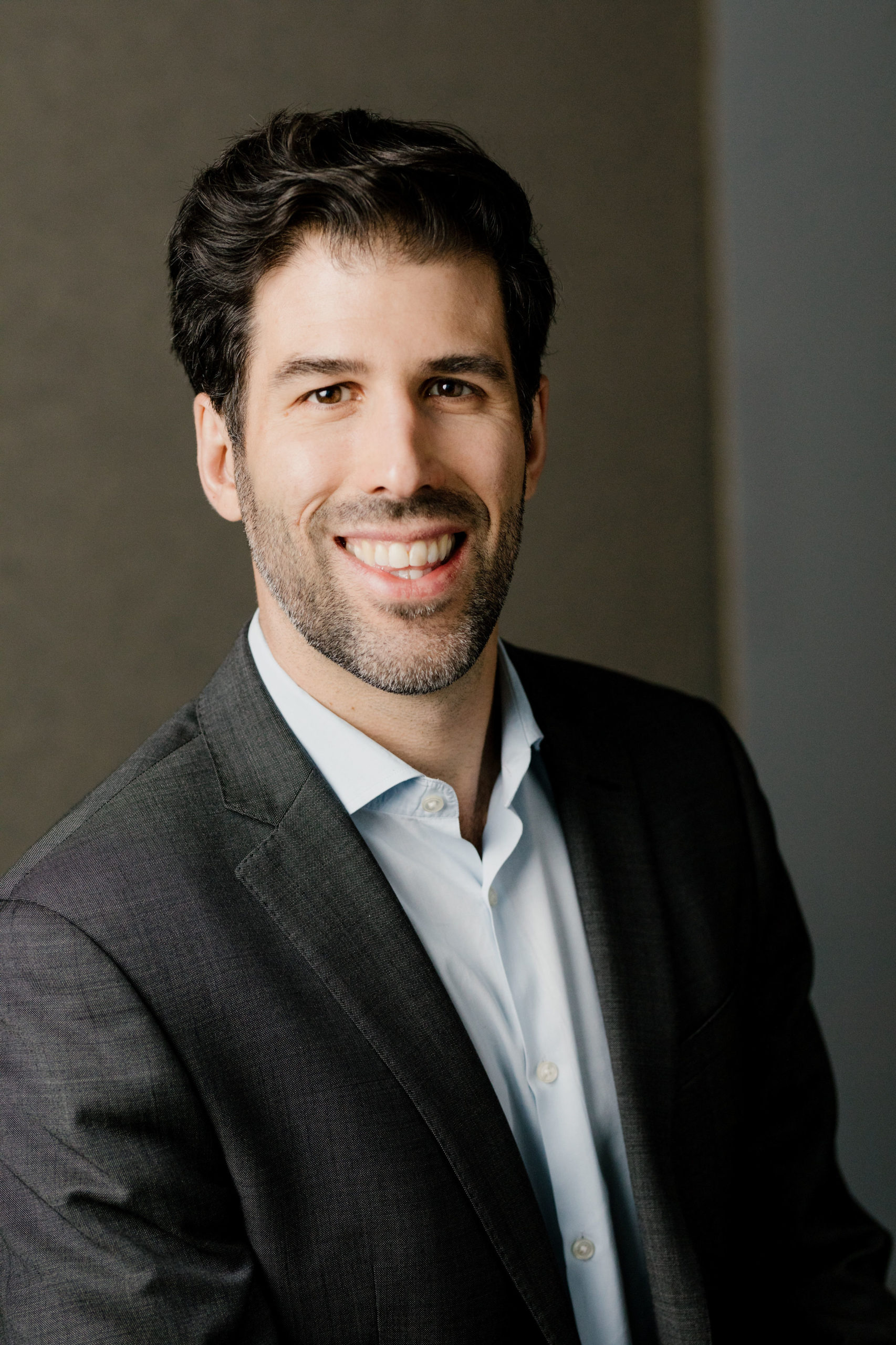 Charles Marshall has over 15 years of experience as a project leader and sustainable design professional, assisting building owners, developers, and designers to set strategies and realize their goals for sustainable development and GHG reduction. He is a Partner at DIALOG, an integrated design practice where planners, architects, engineers, and designers collaborate to create some of Canada’s greenest buildings and communities. Charles takes a holistic view of sustainability including health of people, communities as a whole and the environment. He believes sustainability means creating communities and spaces that increase equity and are assets for all.
Charles Marshall has over 15 years of experience as a project leader and sustainable design professional, assisting building owners, developers, and designers to set strategies and realize their goals for sustainable development and GHG reduction. He is a Partner at DIALOG, an integrated design practice where planners, architects, engineers, and designers collaborate to create some of Canada’s greenest buildings and communities. Charles takes a holistic view of sustainability including health of people, communities as a whole and the environment. He believes sustainability means creating communities and spaces that increase equity and are assets for all.
 Neel Bavishi is passionate about applying the art and science of building performance simulation and data-driven design to produce positive outcomes for the built environment. A mechanical engineer by training, Neel is well-versed in whole-building energy modelling for both new and existing buildings and lifecycle cost analysis, design optimization, and data visualization. His experience includes developing energy models for green building certification programs, carbon-neutral retrofit studies and district energy strategies, and the development of net-zero energy and emissions policies and standards for municipal, provincial, and federal government bodies.
Neel Bavishi is passionate about applying the art and science of building performance simulation and data-driven design to produce positive outcomes for the built environment. A mechanical engineer by training, Neel is well-versed in whole-building energy modelling for both new and existing buildings and lifecycle cost analysis, design optimization, and data visualization. His experience includes developing energy models for green building certification programs, carbon-neutral retrofit studies and district energy strategies, and the development of net-zero energy and emissions policies and standards for municipal, provincial, and federal government bodies.
 Marc Couture leads the Sustainability Office, which is responsible for implementing sustainability and energy conservation initiatives on the St. George campus, with a focus on achieving our climate positive target for 2050.
Marc Couture leads the Sustainability Office, which is responsible for implementing sustainability and energy conservation initiatives on the St. George campus, with a focus on achieving our climate positive target for 2050.
A professional engineer and certified energy manager, he has extensive experience developing energy and sustainability strategic plans and implementing whole campus low carbon solutions.
Marc joined the University in 2020 and is passionate about delivering the best possible outcomes using his holistic, client-centered approach. He joined us from Ecosystem Energy Services, a specialty engineering and construction firm focusing solely on implementing sustainable low carbon solutions.
Achieving Big Carbon Savings in Private Pharma Manufacturing
Kevin Shea1 and Mike Misajon2
1Integral Group
2Precision Nano-Systems
The objective of this presentation is to provide an understanding of how the private pharmaceutical industry can make significant carbon emissions reductions by designing with purpose.
The intent of this discussion will be to look at a case study in Vancouver, Canada, for Precision Nano-Systems’ new pharma manufacturing lab, and what we believe is a requirement for new facilities to focus on carbon reduction, even where not mandated by authorities having jurisdiction. This new facility is going into an existing building, and had little energy/carbon targets put on it by the City’s permitting processes. This presentation will show how some private pharmaceutical companies are taking carbon and energy reduction targets into their own hands and how they can cost effectively reduce their footprint.
Lessons Learned
- What the current Vancouver market baselines are for current industrial/laboratory zoned facilities, and what the baseline for this facility was.
- How a small amount of energy modeling at the outset of the project, and work with suppliers and local utilities resulted in five major carbon reducing strategies that would be implemented to reduce overall facility carbon output by over 70%.
- How local incentive funding can support private companies move forward with the increased capital required for carbon/energy reducing measures.
- Outline what PNI’s corporate goals are for energy/carbon and GHG reductions, showing that there are some pharmaceutical companies that are driven to meet the global 2030 emissions reduction targets.
We will discuss the project timeline, methodologies for analyzing each ECM, outcomes and how these support the corporate goals of PNI.
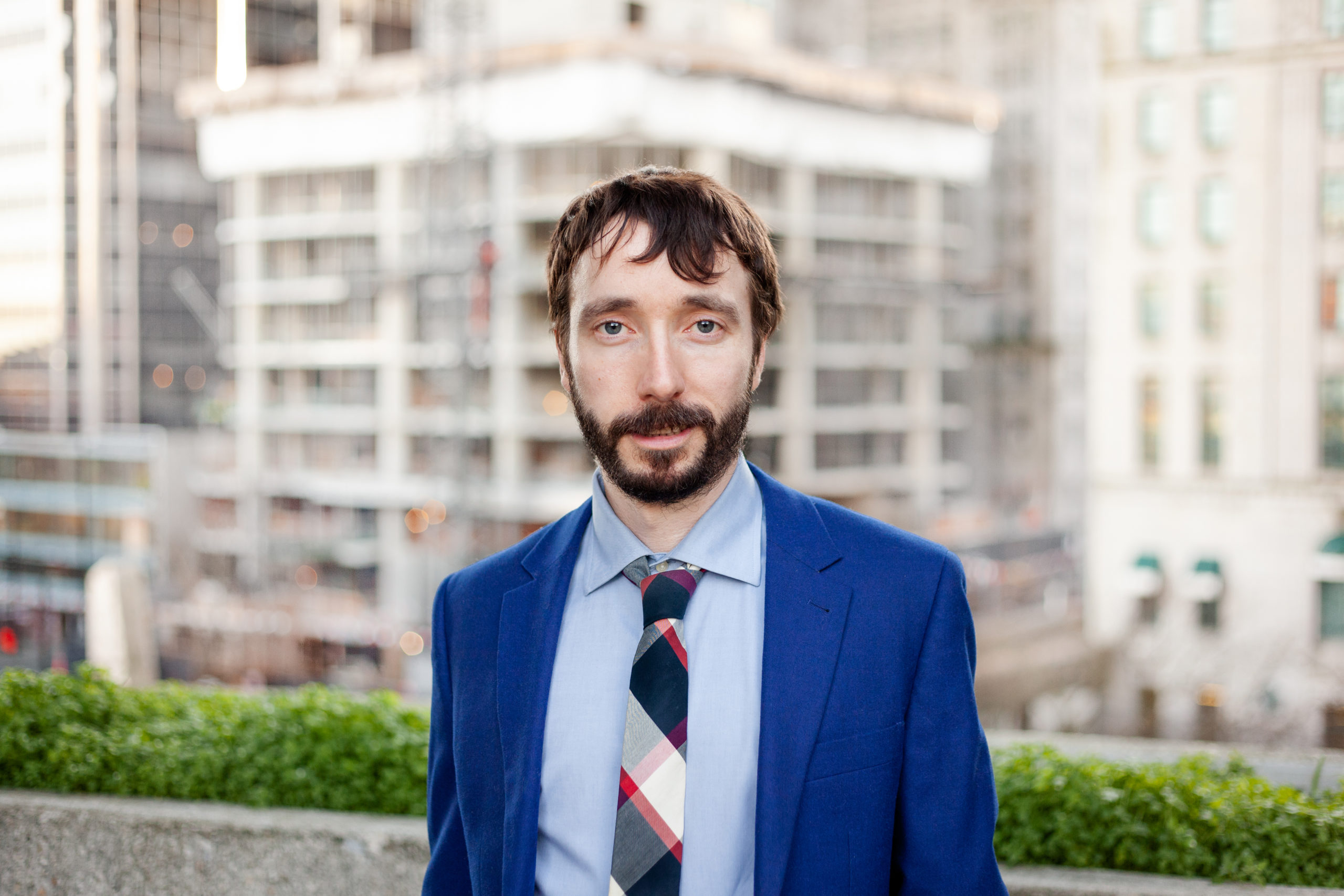 Kevin Shea is a Principal with the Integral Group in Vancouver leading the Science and Technology sector in Canada, with a background in Mechanical Engineering. With more than 15 years experience Kevin is passionate about laboratory design and creating healthy and efficient buildings to support exciting research and manufacturing.
Kevin Shea is a Principal with the Integral Group in Vancouver leading the Science and Technology sector in Canada, with a background in Mechanical Engineering. With more than 15 years experience Kevin is passionate about laboratory design and creating healthy and efficient buildings to support exciting research and manufacturing.
 Mike Misajon is the Facility Manager at PNI and has worked in the life science and biotech sector in Vancouver for many years. He has a broad understanding for GMP and cGMP facilities and the complex building systems that are required to support these spaces. He is key to supporting PNIs mandate for reducing their carbon and energy footprint.
Mike Misajon is the Facility Manager at PNI and has worked in the life science and biotech sector in Vancouver for many years. He has a broad understanding for GMP and cGMP facilities and the complex building systems that are required to support these spaces. He is key to supporting PNIs mandate for reducing their carbon and energy footprint.
Energy and Safety Upgrade in SFU’s LEED Gold Chemistry Building
Jaelim Jeon1, Michelle Lin1, Jo Chuan2
1Simon Fraser University
2Integral Group
The objective of this presentation is to demonstrate a triple bottom approach in applying decarbonization strategy and energy efficient measures in the existing laboratories while enhancing safety.
Simon Fraser University is on track with the 50% GHG reduction target by 2025. One of the core strategies is energy efficient upgrade and decarbonization in existing buildings.
Originally built in 1965, the Shrum Science Chemistry Building, 9,706 m2, at the Burnaby campus was renovated in 2010 earning the University first LEED Gold certification, but that’s just the first step of the deep energy retrofit of the building. Since then, a number of energy conservation strategies were implemented and that included the heat pumps optimization and innovative strobic fans optimization through wind sensing technology.
Recently, SFU has embarked on a fumehood upgrade project to convert more than 50 CAV fumehoods to VAV in the occupied spaces. Through the upgrade, lab users are also able to have real time data of the fumehoods. The project is expected to improve the safety of students and researchers and generate more than 350,000 kWH of energy savings.
The presentation is to describe the process involved in the fumehood upgrade in an existing operating laboratory with minimal down time within the lab and showcase the technology and energy savings of such upgrade.
 Michelle Lin is an Energy Specialist at Simon Fraser University. Throughout her educational and professional career, she has witnessed the importance of communication to ensure that the energy retrofits implemented will operate as intended. In this case, her goals were: raising awareness of the students in the labs about the mechanical upgrades, helping them understand the benefits to themselves and the university, and how their actions can make a big and positive impact.
Michelle Lin is an Energy Specialist at Simon Fraser University. Throughout her educational and professional career, she has witnessed the importance of communication to ensure that the energy retrofits implemented will operate as intended. In this case, her goals were: raising awareness of the students in the labs about the mechanical upgrades, helping them understand the benefits to themselves and the university, and how their actions can make a big and positive impact.
 Jo Chuan , P.Eng., CMVP, is a Project Manager at Integral Group with 11 years of mechanical engineering experience. He has delivered a wide range of studies and implementation projects, focusing on projects that result in energy and decarbonization impacts on existing buildings. He has worked on projects across many sectors including Science & Technology and specializes in energy efficiency in HVAC, DDC, compressed air and laboratory systems.
Jo Chuan , P.Eng., CMVP, is a Project Manager at Integral Group with 11 years of mechanical engineering experience. He has delivered a wide range of studies and implementation projects, focusing on projects that result in energy and decarbonization impacts on existing buildings. He has worked on projects across many sectors including Science & Technology and specializes in energy efficiency in HVAC, DDC, compressed air and laboratory systems. Decentralized Demand Controlled Ventilation in Vivarium Spaces
James Montgomery1 and Kevin Shelast2
1University of British Columbia
2Aqua Air
The objective of this presentation is to highlight successful implementations of DCV systems serving vivarium spaces to transfer lessons learned for improvements to future installations across the sector.
As part of ongoing energy conservation efforts, the University of British Columbia is targeting high intensity research spaces for implementing a decentralized demand controlled ventilation (DCV) to allow for airflow reduction. DCV systems were installed in vivarium spaces of the Centre for Comparative Medicine (CCM) and Pharmaceutical Sciences Centre (PSC), in 2020 and 2022 respectively. The systems included monitoring of pollutants in accordance with CCAC guidelines including particulate matter, ‘Total’ Volatile Organic Compounds (TVOCs), and ammonia, among others. The project at CCM resulted in an annual average reduction in airflow of 55% within affected spaces and reduced the building energy use intensity by ~30% without compromising IAQ or comfort within the affected spaces. The installation in PSC is in the commissioning phase and anticipated to achieve similar savings results.
This presentation will discuss the process for implementation including achieving user buy-in, selection of appropriate areas for installation, and the M&V process. Challenges and solutions will be discussed including elevated pollutant levels, odour issues, and educating staff and researchers on their existing HVAC system and the newly installed DCV system. An overview of lessons learned will be provided as well as plans for potential future projects and modifications to past installations for further improvements.
 Kevin Shelast is a Principal at Aqua Air with 12-years of experience working on energy-efficiency upgrades and airflow controls for critical environments. Kevin continues to work with several Canadian universities and healthcare organizations to help evaluate their airflow control systems, and related building mechanical systems, for optimization through the application of up-to-date energy-saving technologies and control systems.
Kevin Shelast is a Principal at Aqua Air with 12-years of experience working on energy-efficiency upgrades and airflow controls for critical environments. Kevin continues to work with several Canadian universities and healthcare organizations to help evaluate their airflow control systems, and related building mechanical systems, for optimization through the application of up-to-date energy-saving technologies and control systems.
RETHINKING OFFICES: How the Sciences Can Breathe New Life into Commercial Space
RÉIMAGINEZ LES BUREAUX : Comment les sciences peuvent donner une nouvelle vie dans les espaces commerciaux
Heather Taylor1, Jay Deshmukh2, Jonathan Steel2
1University of Toronto
2IBI Group
The objective of this presentation is to discuss the challenges and possibilities when rethinking spaces in downtown urban cores, learned from an office-to-lab retrofit which could serve as a model for future repurposing of commercial real estate for scientific research.
L’objectif de cette présentation est de discuter des défis et des possibilités de repenser les espaces dans les noyaux urbains du centre-ville, tirés d’une rénovation de bureau-à-laboratoire qui pourrait servir de modèle pour la réaffectation future de l’immobilier commercial pour la recherche scientifique.
Though the pandemic has dramatically expanded work-from-home possibilities in many industries, it has also shown how hands-on and equipment-dependent research continues to rely on purpose-built laboratory spaces. As downtown cores continue to struggle with high vacancy rates, the potential for converting office space to research labs has received considerable attention. This is particularly true in cities like Toronto, where the convergence between academic research, the healthcare sector and the biotech industry has gained traction over the past decade, yet the availability of appropriate leasable space for wet bench research remains in short supply.
Retrofitting conventional office space to labs allows institutions and start-ups to expand their research footprint without having to build new facilities. While this strategy also offers new possibilities for commercial landlords, it has inherent challenges related to providing infrastructure requirements, life safety, security and containment, the needs of which often exceed the typical office building provisions. It also requires working with existing structural grids, and the typical floor-to-floor heights for office real estate, which can be challenging when incorporating additional mechanical systems and providing exhaust systems per local regulations. However, with innovative and integrated design and construction strategies, it is possible to repurpose office spaces to laboratories, thereby opening a new avenue for regenerating urban cores while reinforcing the S+T sector.
The presentation will share the challenges and lessons learned from an office-to-lab renovation in a downtown Toronto office tower for the University of Toronto’s Faculty of Medicine. We will explore the functional needs, integrated design strategies and constructability issues, which were resolved through the active collaborative efforts of the landlord, stakeholders and design team. We will review the project’s development from the feasibility study to design, and through (early) implementation, highlighting the space and circulation planning approach, provision for infrastructure upgrades and regulatory requirements, containment and security considerations and construction strategies to meet schedule and budget.
While renovating existing space is an implicitly sustainable act when compared with new construction, if not carefully implemented it can cause significant disruption to adjacent tenants and core building infrastructure. Our project demonstrates the fundamental feasibility of introducing highly serviced laboratory space into existing office buildings in a minimally invasive and self-contained manner. In addition, we will address our approach towards resilient design, whereby we have shaped this lab-of-the-future to be agile – moving away from research-specific programmatic and infrastructure requirements to a flex lab approach which can adapt to future changes without requiring further renovations. Furthermore, this project serves as a model for reimagining multiple floors of this and other commercial towers and for the university’s Faculty of Medicine to test this agile “new normal” space planning approach as they embark on a major redevelopment project at their core campus.
Alors que les espaces de bureaux commerciaux ont connu une baisse de la demande des locataires conventionnels, les institutions et les start-ups biotechnologiques ont toujours besoin de plus d’espaces pour faire leur recherche. Toutefois, l’espace disponible est en forte baisse dans la plupart des villes Canadiennes. L’objectif de cette présentation est de discuter des défis et des possibilités pour redéfinir les espaces dans les centres urbains, qui ont été appris lors d’une rénovation bureau-à-laboratoire et qui pourrait servir en tant que modèle pour la reconversion du secteur immobilier commercial pour la recherche scientifique.
Alors que la pandémie a dramatiquement élargi les possibilités pour le télétravail dans plusieurs industries, on voit également comment la recherche pratique exigeant de l’équipement continue à dépendre des espaces de laboratoires conventionnels. Alors que les centres-villes continuent à combattre les taux élevés de bureaux vacants, le potentiel pour convertir les espaces de bureaux en laboratoires de recherche a reçu une attention considérable. Ceci est particulièrement vrai dans les villes comme Toronto, où la convergence entre la recherche académique, le secteur médical, et l’industrie de biotechnologie est devenue de plus en plus populaire durant la dernière décennie. Malgré cela, il n’y a toujours pas assez d’espaces à louer pour la recherche.
La transformation d’espaces de bureaux conventionnels en laboratoires permet aux institutions et aux start-ups d’étendre leur empreinte de recherche sans avoir à construire de nouvelles installations. Même si cette stratégie offre plusieurs nouvelles possibilités pour les propriétaires commerciaux, il y a des défis liés à la fourniture d’infrastructures, la sécurité des personnes, le confinement/sécurité, dont les besoins dépassent les provisions d’un espace de bureau typique. Ceci exige aussi de travailler avec des grilles structurelles existantes, et hauteurs d’étages typiques pour l’immobilier de bureaux, ce qui rend plus difficile d’incorporer des systèmes mécaniques additionnels et fournir des systèmes d’échappement selon les règlements locaux. Par contre, avec les stratégies innovantes et intégrées dans la conception et la construction, il est possible de transformer des espaces de bureaux en des espaces laboratoires, qui vont ouvrir de nouvelles voies pour régénérer les noyaux urbains tout en renforçant le secteur des sciences et technologies.
Notre présentation va partager les défis et les leçons apprises d’une rénovation bureau-à-laboratoire dans une tour de bureau au centre-ville de Toronto pour la faculté de médecine à l’Université de Toronto. Nous allons explorer les besoins fonctionnels, les stratégies de conception intégrées et les questions de constructibilité qui se sont réglées par les efforts de collaboration active entre le propriétaire, les parties prenantes, et l’équipe de conception. Nous allons revoir le développement du projet, de l’étude de faisabilité à la conception, et du début de sa mise en œuvre, en soulignant l’approche de planification de l’espace et de circulation, les provisions pour l’amélioration des infrastructures et des exigences réglementaires, les considérations de confinement et de sécurité ainsi que des stratégies de construction pour respecter l’échéancier et le budget.
Tandis que rénover un espace existant est un acte durable comparé à la nouvelle construction, si le projet n’est pas soigneusement mis en œuvre, le chantier peut causer une perturbation considérable aux locataires adjacents et aux infrastructures du bâtiment de base. Notre projet démontre la faisabilité fondamentale d’introduire un espace laboratoire hautement équipé dans des espaces de bureaux déjà existants d’une manière autonome et très peu invasive. De plus, nous adresseront notre approche sur la conception résiliente, où l’on a influencé ce laboratoire d’avenir pour qu’il soit agile – en s’éloignant des exigences de programme et d’infrastructure spécifique à la recherche, et pour adopter et pour développer une approche de ‘laboratoire flexible’ qui peut s’adapter aux futurs changements sans nécessiter des nouvelles rénovations. De plus, ce projet servira de modèle pour réimaginer plusieurs étapes durant la rénovation et d’autres immeubles commerciaux et permettre la faculté de médecine de l’Université de tester cette approche de planifications d’espaces agiles “nouvelle norme” tout en embarquant dans un projet de redéveloppent majeur sur leur campus principal.
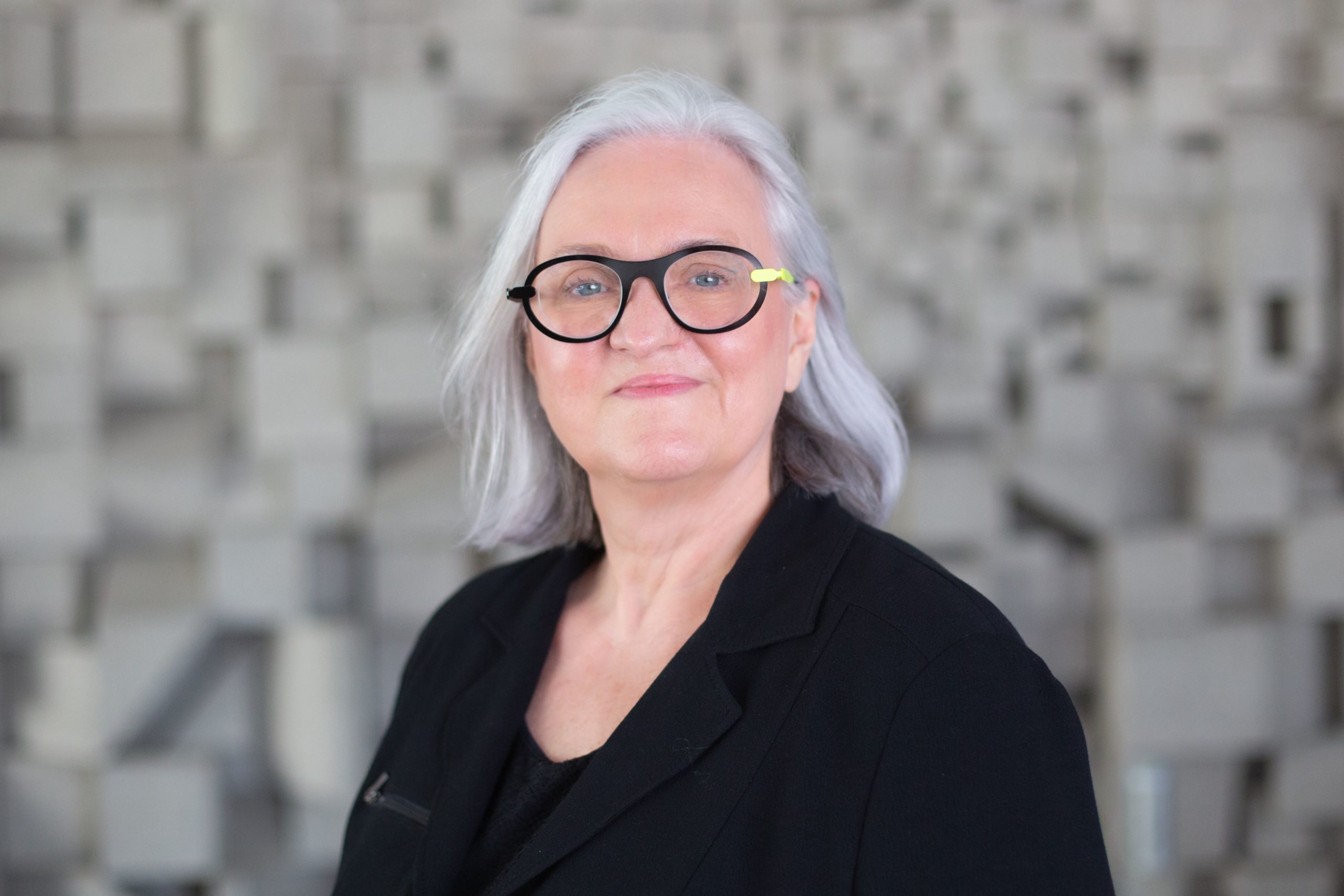 As Executive Director, Heather Taylor leads the facilities and space planning function at the Faculty of Medicine and supports the most advanced research labs and education facilities in Canada. She has developed a specialized understanding of the critical importance of research to the institution’s mission; optimizing space allocation responsive to pedagogy, collaborative research, and digital technology; regulatory requirements relating biosafety, hazardous materials, health, safety and accessibility; and the implementation of equitable, compliant space allocation standards. She is also leading the planning, design and construction for the once-in-a-lifetime redevelopment of the Medical Sciences building into an iconic state-of-the-art education and research building.
As Executive Director, Heather Taylor leads the facilities and space planning function at the Faculty of Medicine and supports the most advanced research labs and education facilities in Canada. She has developed a specialized understanding of the critical importance of research to the institution’s mission; optimizing space allocation responsive to pedagogy, collaborative research, and digital technology; regulatory requirements relating biosafety, hazardous materials, health, safety and accessibility; and the implementation of equitable, compliant space allocation standards. She is also leading the planning, design and construction for the once-in-a-lifetime redevelopment of the Medical Sciences building into an iconic state-of-the-art education and research building.
 An award-winning architect with over 20 years of experience, Jay Deshmukh is a recognized thought leader in institutional architecture in Canada and overseas. She leads the design, strategic thinking and planning for education and healthcare projects, and engages meaningfully with clients, stakeholders and authorities to define and implement the strategic vision of the project through place-centric design. She has experience in both design and project management for new and existing structures of varied typologies, scales and complexity. She is deeply engaged in the design community as a researcher investigating post-pandemic campus planning and design, and as a guest critic and lecturer at design schools.
An award-winning architect with over 20 years of experience, Jay Deshmukh is a recognized thought leader in institutional architecture in Canada and overseas. She leads the design, strategic thinking and planning for education and healthcare projects, and engages meaningfully with clients, stakeholders and authorities to define and implement the strategic vision of the project through place-centric design. She has experience in both design and project management for new and existing structures of varied typologies, scales and complexity. She is deeply engaged in the design community as a researcher investigating post-pandemic campus planning and design, and as a guest critic and lecturer at design schools.
 Jonathan Steel is a registered architect and Director of the Learning+ practice with a background of working across sectors, specializing in science and education. He has led on high value, complex schemes where design quality, client liaison and effective team coordination has been paramount to success. His attention to detail and pursuit of best practice has enabled him to successfully deliver high quality projects for some of the world’s leading scientific institutions. Jonathan is adept at delivering projects within tight budgetary frameworks while formulating clear briefing strategies from a diverse set of composite user requirements to deliver research and learning environments.
Jonathan Steel is a registered architect and Director of the Learning+ practice with a background of working across sectors, specializing in science and education. He has led on high value, complex schemes where design quality, client liaison and effective team coordination has been paramount to success. His attention to detail and pursuit of best practice has enabled him to successfully deliver high quality projects for some of the world’s leading scientific institutions. Jonathan is adept at delivering projects within tight budgetary frameworks while formulating clear briefing strategies from a diverse set of composite user requirements to deliver research and learning environments.
Exhaust and Intake Considerations for Converting Offices to Labs
Ryan Parker, RWDI
The objective of this presentation is to identify design planning strategies that can be used in early design stages to minimize re-entrainment issues and maximize lab tenant flexibility; and summarize the best practice tools used to evaluated exhaust and intake designs including developing applicable design criteria and mitigation strategies for reducing exhaust re-entrainment impacts.
Many buildings designed for life at the office are being converted to lab spaces in the hopes of attracting future, long-term tenants. These buildings are often located in mixed-use, urban areas and require significant changes to mechanical systems to accommodate lab ventilation requirements. Designers need to provide flexibility in the core design to accommodate various types of lab tenants while also considering possible future tenant needs. A key challenge to the design process is locating lab exhausts and AHU equipment within the physical constraints of the building, while maintaining safe air quality in, and outside, the lab. Re-entrainment of exhaust contaminants can affect air quality within the building and at neighboring mixed-use buildings. Prudent planning during early design stages using typical parameters can help to properly locate core building exhaust and HVAC equipment, and future tenant exhausts, resulting in a final design that is both safer and more energy efficient. The I2SL Exhaust Design Guide provides several concepts that can be especially beneficial. However, detailed evaluation is often necessary to confirm exhaust dispersion performance and maximize long-term energy savings.
This presentation will outline design planning strategies using specific examples that can be used early in the design process to reduce air quality impacts of the new lab exhausts on the renovated building and its neighbors.
Wind Engineering: More Than Just Wind Turbines
Jordan Beardy-Singh, Cermak Peterka Petersen Wind Engineering Consultants
The objective of this presentation is to provide a broad overview of wind engineering and the different modeling tools that can be used to contribute to a design’s sustainability goals.
When people think of sustainable building design, we often think of the types of materials, or energy consumed by a building. However, when one considers how to incorporate these features into laboratory design, wind begins to play a critical role in turning an average design into an elevated one.
Starting with how we define design wind speeds and extreme events, the source of our wind data is the first key step that defines the rest of the design. From structural to mechanical, a site-specific design wind speed can provide material savings when accurate wind loads are available, successful implementation of on-site energy generation, green roofs that last within the built environment, reduced operational downtime during severe weather events, and ventilation systems that are safe and energy efficient. When and how wind engineering is incorporated into the design process is just as important as the design itself and can define what value can be gained.
A well thought out design strikes a balance between comfort, safety, and sustainability. This presentation will focus on how wind engineering typically considered in design and provide insights into how a detailed wind engineering analysis can contribute to sustainability, energy use, and decarbonization goals associated with laboratory design.
 Jordan Beardy-Singh has been an air quality consultant since 2017 and has supported the success of client building performance objectives using wind tunnel and numerical modeling for exhaust dispersion analyses. His work spans numerous industries including healthcare, higher education, and laboratories.
Jordan Beardy-Singh has been an air quality consultant since 2017 and has supported the success of client building performance objectives using wind tunnel and numerical modeling for exhaust dispersion analyses. His work spans numerous industries including healthcare, higher education, and laboratories.
Efficiency First and the New Normal for Sustainable Lab Design
Priorité de l’efficience et la nouvelle normalité de conception de laboratoire durable
Dan Diehl, Aircuity, Inc
The objective of this presentation is to educate on lab design to create a “new normal” from a sustainability perspective.
L’objectif de cette présentation est d’éduquer sur la conception de laboratoires pour créer une “nouvelle normalité” dans une perspective de durabilité.
The time is now to create a resilient lab to address decarbonization and prevent exceeding the 1.5C threshold. Lab buildings are a large source of energy and carbon reduction opportunity to reach stated goals. A Top 15 Life Sciences Company deployed an “efficiency first” airside optimization programs in six of their labs and are receiving $900,000 in annual energy savings and every $1 invested in airside optimization will generate a 5x return on investment on future decarbonization efforts in just five years. This case study will be shared with details on airside’s impact on electrification along with how and why an “efficiency first” approach should be taken in other research facilities to create the new normal from a sustainability perspective.
L’heure d’aborder la question de la décarbonisation pour éviter de surpasser le seuil de 1,5°C est arrivée. Les bâtiments de laboratoires offrent une importante réduction des émissions de carbone et source énergétique pour atteindre les objectifs fixés. Le Top 15 des compagnies de recherche pour les sciences de la vie a déployé le programme d’optimisation Airside « Priorité de l’efficience » pour six de leurs laboratoires et profite d’une économie énergétique de 900 000 $ annuellement. Chaque dollar investi dans l’optimisation Airside multiplie par cinq le rendement de l’investissement sur les efforts futurs de décarbonisation. Cette étude de cas sera partagée avec des détails de l’impact d’Airside sur l’électrification, ainsi que sur la façon et les raisons pour lesquelles l’approche « Priorité de l’efficience » devrait être adoptée dans d’autres installations de recherche pour créer la nouvelle normalité du point de vue de la durabilité.
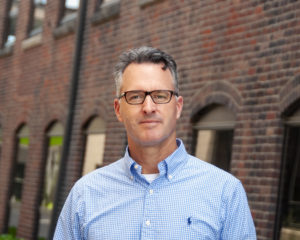 Dan Diehl is CEO and President of Aircuity. He has over twenty-five years of industry expertise across a wide variety of vertical markets and disciplines in commercial and light industrial building markets. Prior to Aircuity Dan led business development at Lutrno Electronics, was a partner for six years with Synergy and spent 11 years at Johnson Controls Inc. Mr. Diehl earned a BS degree in Mechanical Engineering from the University of Maryland and has an MBA from Villanova University.
Dan Diehl is CEO and President of Aircuity. He has over twenty-five years of industry expertise across a wide variety of vertical markets and disciplines in commercial and light industrial building markets. Prior to Aircuity Dan led business development at Lutrno Electronics, was a partner for six years with Synergy and spent 11 years at Johnson Controls Inc. Mr. Diehl earned a BS degree in Mechanical Engineering from the University of Maryland and has an MBA from Villanova University.




